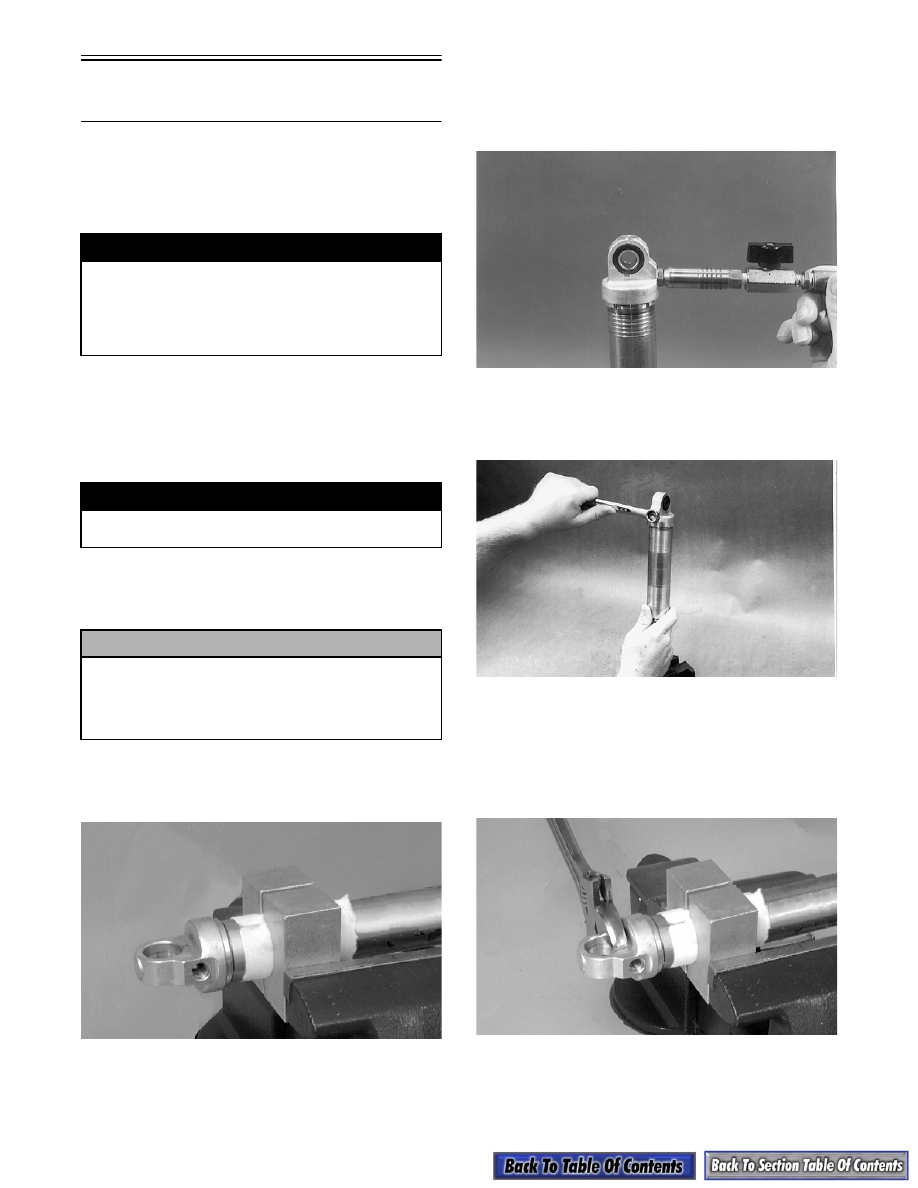Snowmobile Arctic Cat (2002 year). Manual - part 172

9-166
Servicing I.F.P.
Style Shocks
NOTE: Some illustrations and photographs used
in the following sub-sections are used for clarity
purposes and are not designed to depict actual
conditions.
DISASSEMBLING
1. Remove the shock from the snowmobile.
2. Wash the shock body in parts cleaner; then dry
with compressed air to remove sand and dirt.
3. Place the shock into the Gas Shock Retaining
Blocks (p/n 0644-142); then remove shock eyelet
mounting axle and bushings from end cap.
NOTE: A paper shop towel between the shock
body and retaining blocks will help prevent scuff-
ing of the shock body.
AP110DA
4. Remove the screw from the bladder housing on the
bottom of the shock. Discharge all the pressure
from the shock using the Shock Inflation Needle
(p/n 0644-158). Open the valve in filler handle
until all pressure is released.
AG335
5. Using a 9/16-in. wrench, remove the brass bladder
housing from the lower end cap. Account for an
O-ring.
AP014
6. Using a large adjustable wrench (12-in. or 14-in.),
remove the end cap.
NOTE: 1994 and older shocks have Loctite on
the lower end cap. Heating the lower end cap may
be necessary. Use care not to overheat.
AP016DA
7. Using a 1-in. open end wrench, loosen the shock
shaft bearing cap a couple of turns.
! WARNING
Before servicing a gas shock absorber, first dis-
charge all pressure from the shock. Remove the
screw from the bottom of the shock and insert the
Shock Inflation Needle (p/n 0644-158). Open valve
until all pressure is released. Failure to do this may
cause personal injury.
! WARNING
When using compressed air to dry components,
always wear safety glasses.
! CAUTION
It is important that the Gas Shock Retaining
Blocks (p/n 0644-142) are used during both
disassembly and assembly. Any other method of
securing the shock body during these
procedures may deform the shock body cylinder.